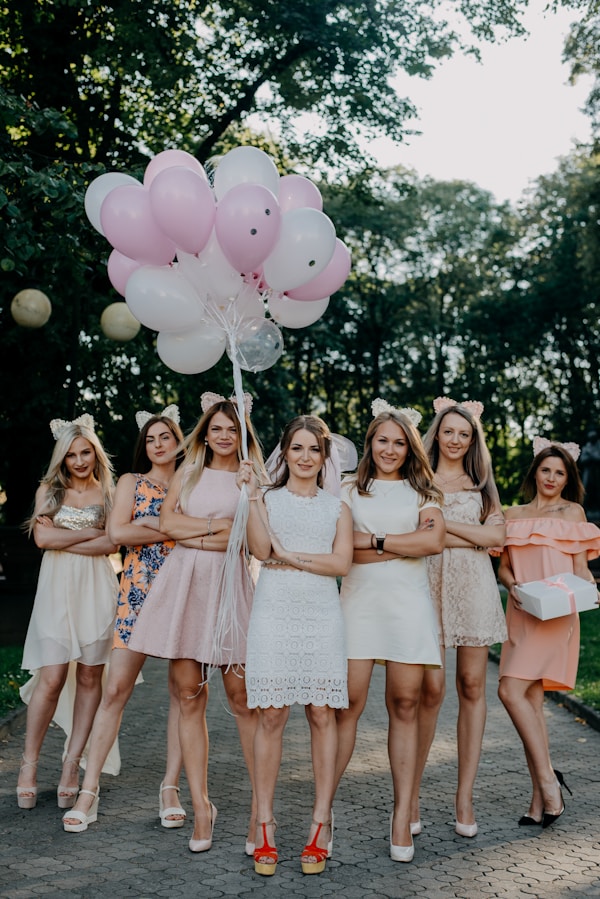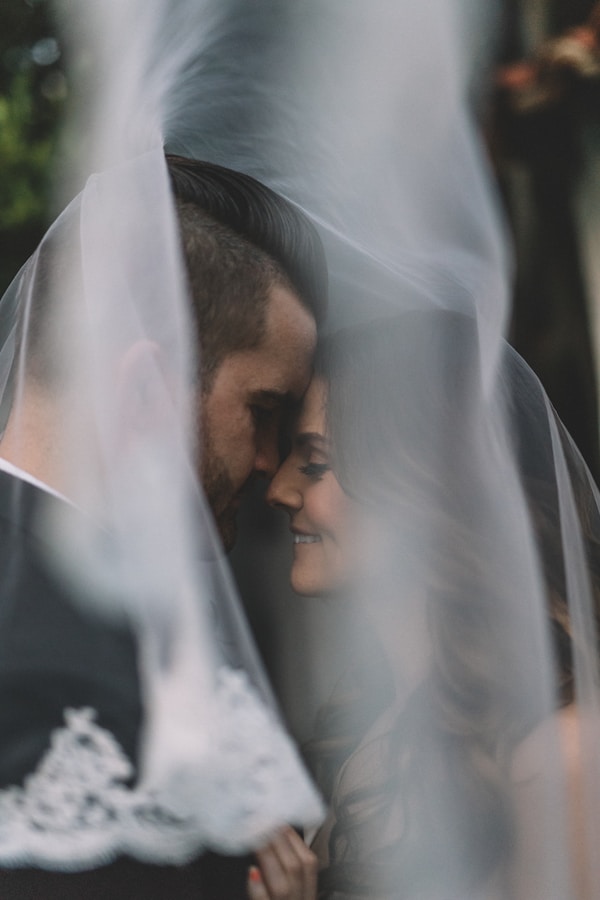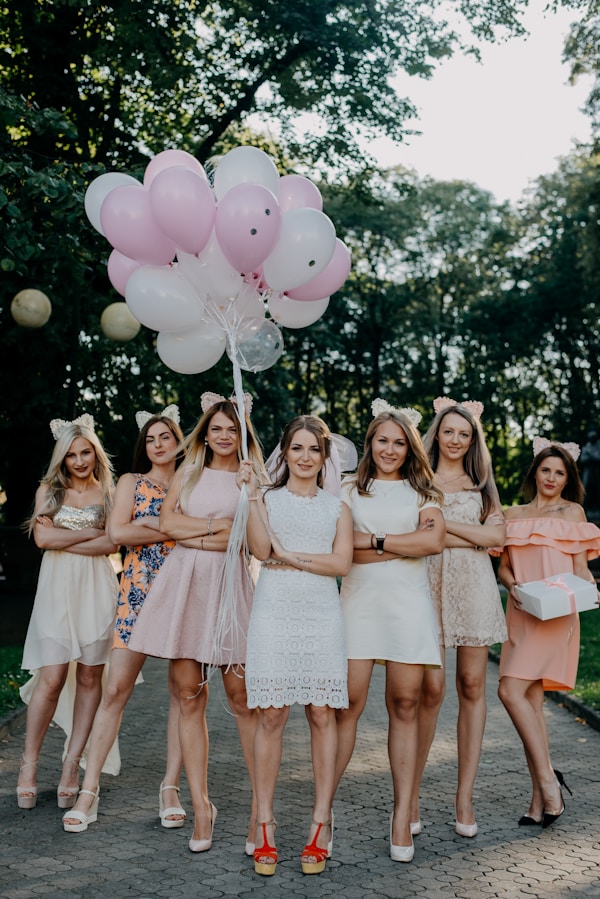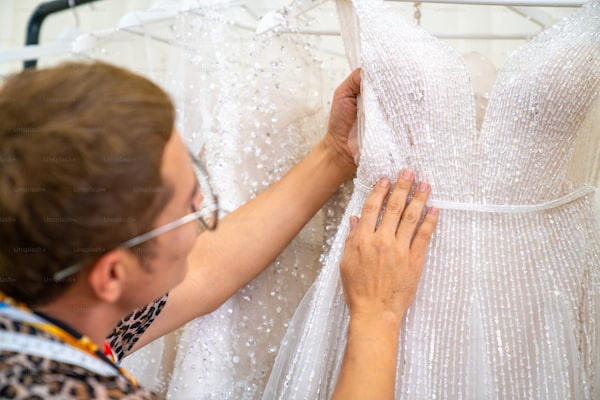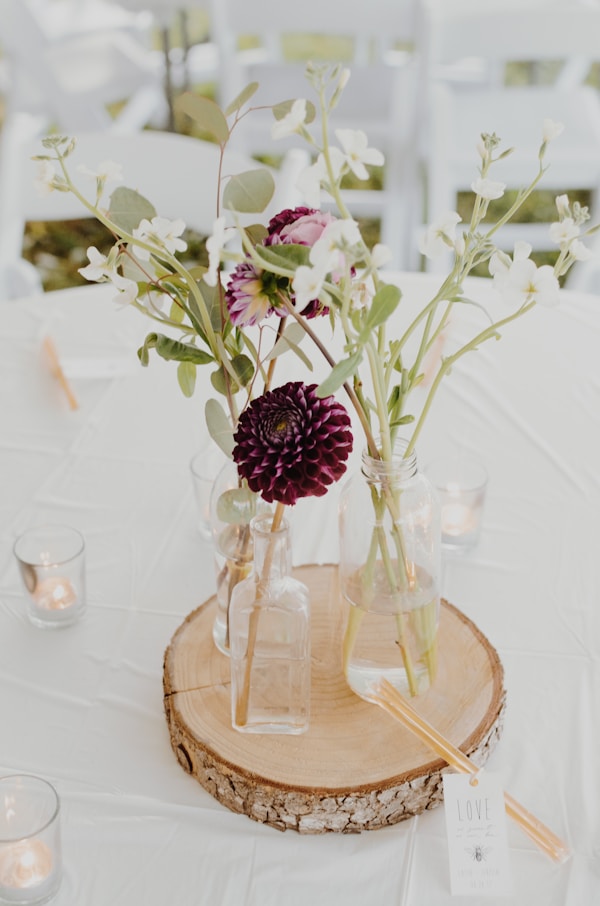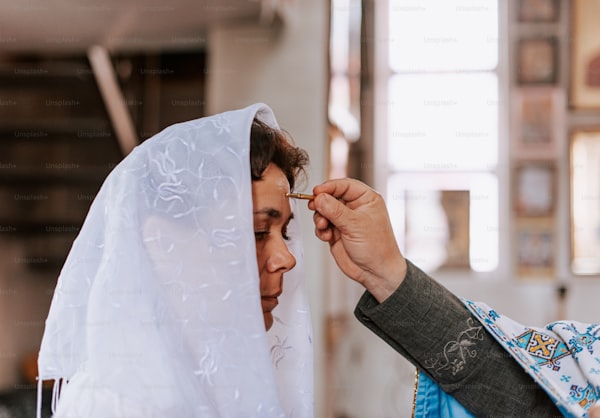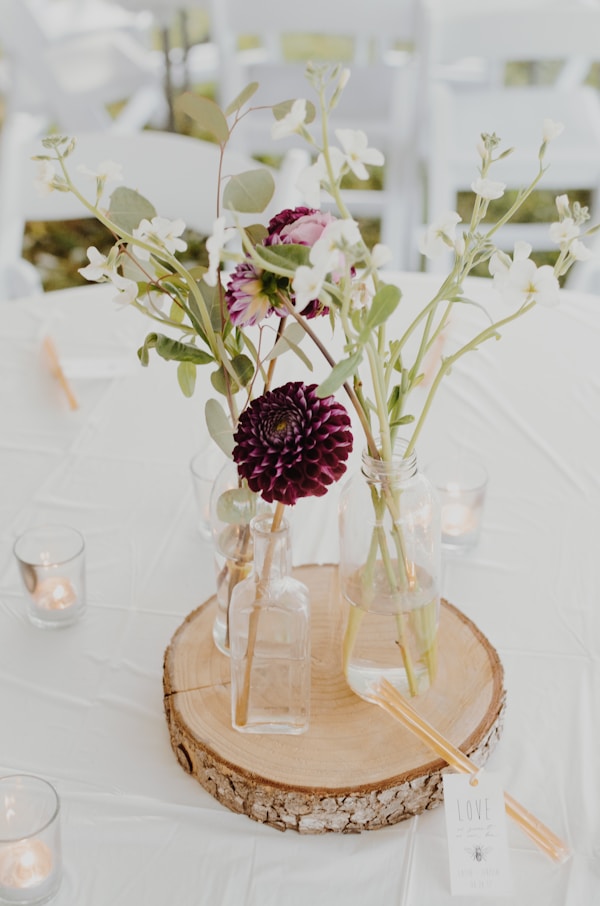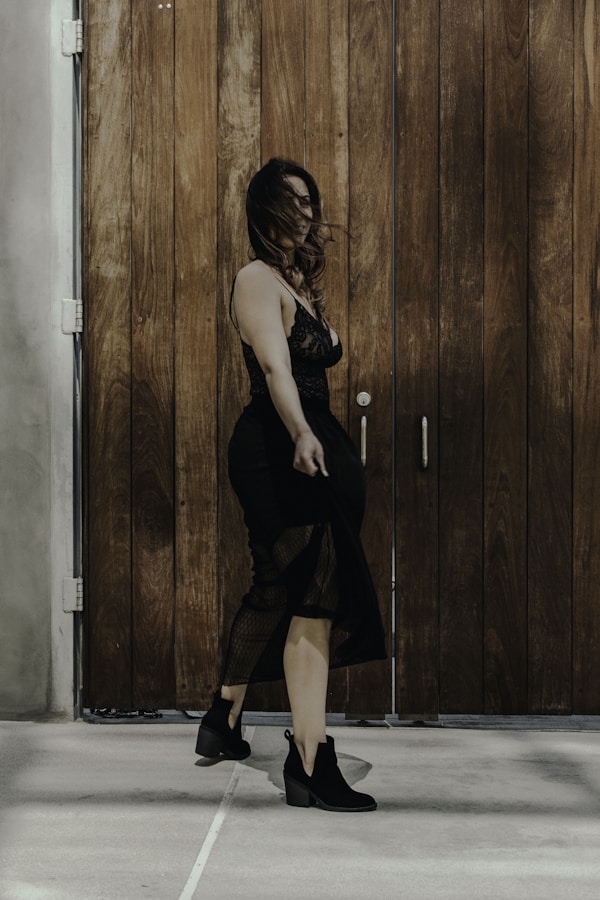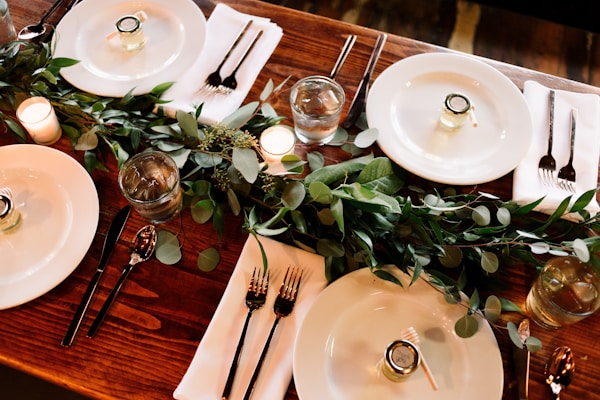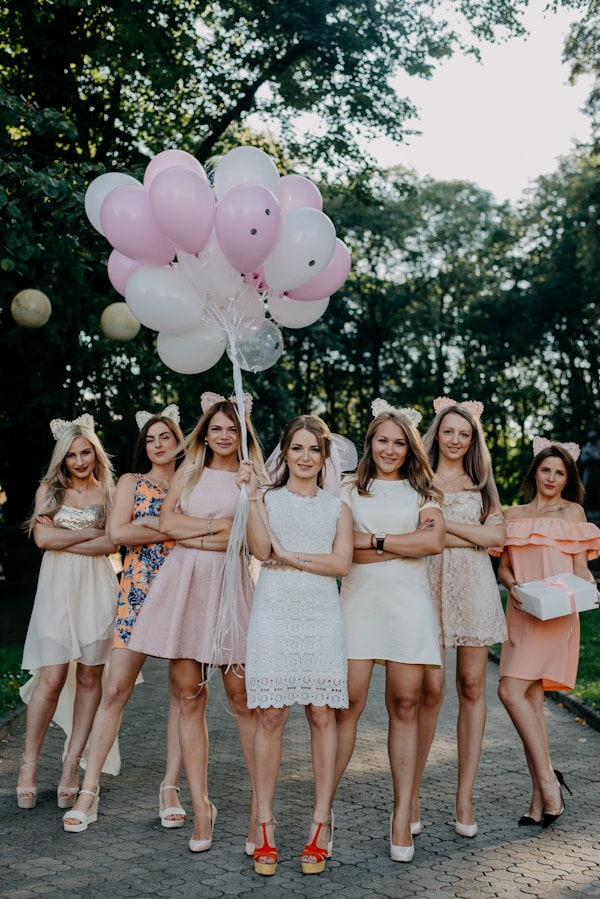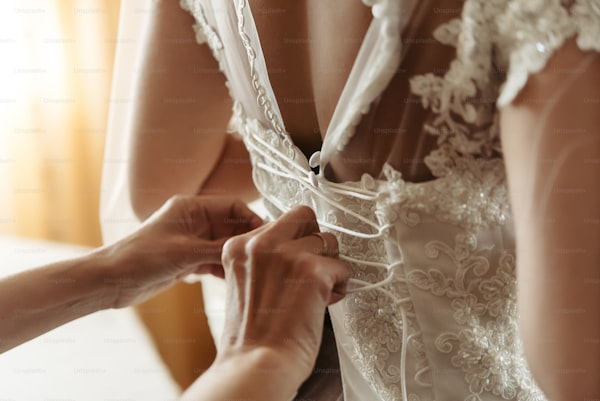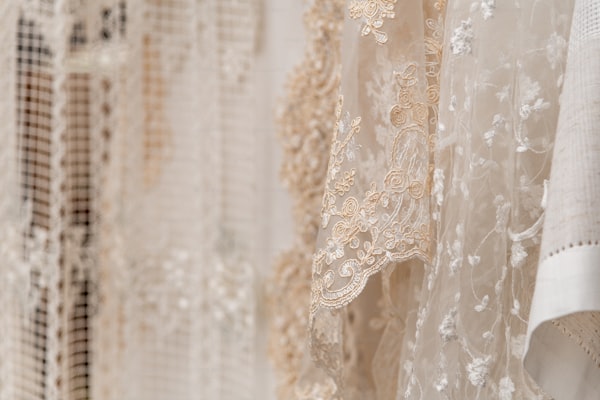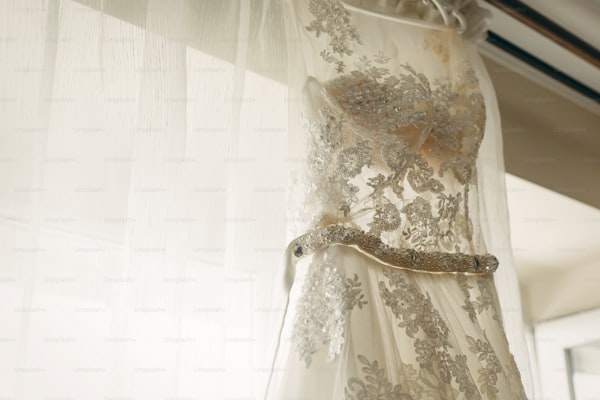The Ultimate Guide to Attaching Detachable Elements to Wedding Dresses: How to Perfectly Add a Cape
IntroductionWedding dresses come in all shapes and sizes, and many brides are looking for ways to add a unique touch to their special day. One popular option is incorporating detachable elements, such as a cape, into the design. This allows for versatility in the wedding outfit and a stunning transformation from ceremony to reception. In this article, we will explore the different methods used to attach detachable elements, with a focus on how to beautifully attach a cape to a wedding dress.Why Detachable Elements Are TrendingDetachable elements provide brides with the opportunity to customize their wedding dress, making it more than just a one-time wear. Capes, in particular, have surged in popularity for the following reasons: Versatility: A detachable cape can easily transform a traditional gown into a chic, modern look. Style Statement: It adds an element of drama and sophistication to the overall appearance. Layering: Capes allow brides to easily transition from a formal ceremony to a fun reception while maintaining their style.Methods for Attaching Detachable ElementsWhen it comes to attaching a detachable cape or other elements to a wedding dress, there are several methods that designers and brides can consider:1. Hook and Eye FastenersThis is one of the most common methods for attaching a detachable cape. Small hooks are sewn onto the dress, which correspond to tiny loops or eyes on the cape. The advantage of this method is that it is discreet and secure, ens...
How to Design a Wedding Dress That Suits Both Ceremony and Reception: A Comprehensive Guide
Designing a wedding dress requires a meticulous balance between aesthetics and functionality, especially when the dress needs to be suitable for both a ceremony and a reception. In this article, we will explore essential elements you'll want to consider, share tips from industry experts, and answer common questions about creating the perfect wedding dress. Let's dive in!Understanding the Essentials1. The Significance of VersatilityA versatile wedding dress is crucial for the modern bride. This type of dress allows for seamless transitions throughout the wedding day—from the solemnity of the ceremony to the joyful celebration of the reception. When you design a versatile dress, you ensure that every moment is comfortable and stylish.2. Fabric SelectionThe choice of fabric plays a pivotal role in how your wedding dress drapes, flows, and feels. Here are common fabric types to consider:Fabric TypeAdvantagesSilkLuxurious feel; drapes beautifullyLaceRomantic appearance; adds textureChiffonLightweight; ideal for movementTulleFullness; perfect for skirts and overlays3. Design Elements to ConsiderWhen designing your dress, think about the following elements:A. Neckline StylesDifferent necklines can change the formality and comfort of a dress. Options like sweetheart, off-the-shoulder, or high neck can elevate your look while ensuring ease of movement during dancing.B. Skirt LengthLong skirts can give a traditional feel during the ceremony, while shorter designs may allow for more cas...
Mastering the Draped Effect: Techniques for Wedding Dress Design
Introduction to Draped Effects in Wedding Dresses Wedding dresses are considered a symbol of elegance, romance, and style. Among the various styles, the draped effect has become increasingly popular. This technique adds a specific allure and sophistication to gowns, making brides feel like true queens on their special day. So, what techniques are used to create a draped effect on a wedding dress? In this article, we will explore various methods, discuss related styles, and answer common questions regarding draping in wedding dress design. The Art of Draping in Fashion Design Draping is a unique and skillful technique in the realm of fashion design that involves arranging fabric on a dress form to achieve a desired aesthetic. It is particularly effective in wedding dresses, where structural elegance is essential. Designers employ various methods to create draped effects—from simple manipulations of fabric to intricate stitching techniques. Common Draping Techniques Let's dive into some of the most popular techniques utilized to achieve the draped effect in wedding dresses: TechniqueDescriptionGatheringFabric is drawn together to create soft folds, which adds fullness and texture.Asymmetrical DrapingFabric is draped unevenly to create a dynamic, flowing silhouette that flatters the body.RuchingThis technique involves tightly gathering fabric along a seam, producing a textured, ruffled appearance.Twisted DrapingThe fabric is twisted and arranged in a way that creates a dramatic...
Handling Fitting Adjustments for a Wedding Dress with a Full Skirt: Your Comprehensive Guide
Your Dream Wedding Dress: A Perfect FitGetting married is one of the most significant events in a person's life, and choosing the perfect wedding dress is a crucial part of that experience. Among the various styles available, dresses with full skirts are particularly popular for creating a fairytale look. However, ensuring your dress fits perfectly requires careful handling of any necessary adjustments. In this article, we will guide you through the process of fitting adjustments for a wedding dress with a full skirt, addressing common concerns, and providing valuable insights.Understanding the Nature of Full SkirtsBefore diving into the adjustments, it’s important to understand why full skirts can present unique fitting challenges. Wedding dresses with full skirts often have layers of fabric, which can create volume and drama but also complicate the fitting process. Common issues include: Excessive Fabric Bunching Incorrect Waist Measurement Uneven Hem Lines Inflexibility in MovementEssential Steps for Fitting AdjustmentsHere’s a breakdown of the essential steps you should follow to ensure a proper fit for your wedding dress with a full skirt.1. Selecting the Right SeamstressChoosing an experienced seamstress knowledgeable in handling full skirts is the first and foremost step. Look for recommendations or reviews from brides in your area, and ensure your seamstress has a portfolio showcasing similar work.2. Initial Fitting AppointmentDuring your first fitting, we...
Essential Methods for Preventing Snags in Delicate Wedding Dress Fabrics
Understanding Wedding Dress Fabrics Choosing the perfect wedding dress fabric is crucial for any bride. However, one of the common issues brides face is snagging. Handling delicate fabrics requires knowledge of suitable methods to ensure the dress remains flawless on the big day. This article will discuss the various methods used to prevent snags when handling delicate wedding dress fabrics. Types of Delicate Wedding Dress Fabrics Before delving into prevention methods, it’s essential to understand the types of fabrics frequently used in wedding dresses. Each fabric type has its unique characteristics and vulnerability to snags. Some popular fabrics include: Fabric TypeCharacteristics SatinSmooth and glossy, but prone to snagging. LaceIntricate patterns that can catch on objects. ChiffonLightweight and flowing, but delicate and easy to snag. TulleSheer and structured, making it vulnerable to snags. Common Causes of Snags Understanding what leads to snags can help in prevention. Here are some common causes: Contact with rough surfaces, such as walls or furniture. Jewelry and accessories that may catch on the fabric. Improper storage methods that increase fabric stress. Wearing with other textured garments that may cause friction. Methods for Preventing Snags Now that we understand the types of fabrics and their vulnerabilities, let’s explore effective methods to prevent snags: 1. Choosing the Right Accessories Brides should opt for smooth, snag-free ...
Creating the Perfect Wedding Dress: A Guide to Designing a Fitted Bodice and Flowy Skirt
How to Create a Wedding Dress with a Fitted Bodice and Flowy SkirtDesigning a wedding dress is often a dream come true for many brides. Every bride wishes to look stunning on her special day, and the right dress can make that happen. Among the popular styles, a wedding dress featuring a fitted bodice and a flowy skirt stands out as a timeless choice. In this article, we will explore the steps to creating such a dress, the key considerations involved, and tips for achieving a perfect fit, along with answers to commonly asked questions.Understanding the Elements of a Wedding DressBefore diving into the creation process, it’s essential to understand the two main components of the dress: the bodice and the skirt. The fitted bodice is designed to hug the bride's torso, providing support and shape, while the flowy skirt adds movement and an ethereal quality to the dress.Fitted BodiceThe fitted bodice is often characterized by structured patterns that define the waist and enhance the natural curves of the bride's body. It usually includes elements like boning, cups, and various closures to achieve the desired fit.Flowy SkirtThe flowy skirt can be made from lightweight fabrics such as chiffon, organza, or tulle. These materials allow for fluid movement and can be layered to create a dramatic effect. The skirt can vary in length, from knee-length to a full length that trails behind the bride.Step-by-Step Guide to Create Your Wedding Dress1. Inspiration and SketchingThe first step in c...
Essential Considerations When Designing a Wedding Dress with a Deep V-Neck
Introduction to Deep V-Neck Wedding Dresses The wedding dress is one of the most crucial elements in a wedding ceremony, representing elegance, beauty, and the personality of the bride. Among the various styles available, the deep V-neck wedding dress is a popular choice for those who want to make a bold yet sophisticated statement. This design gracefully highlights the neckline and adds an element of allure while maintaining an air of elegance. Understanding Deep V-Necklines A deep V-neckline typically extends lower than traditional necklines, creating a striking visual impact. However, designing a wedding dress with a deep V-neck demands careful consideration to ensure that it is both flattering and suitable for the occasion. Here are some factors to keep in mind: Consideration Description Body Type V-necklines can vary in flattering qualities for different body types. Understanding your body shape is critical in choosing the right depth and width of the V. Fabric Choice Choosing the right fabric can enhance the overall look and feel of the dress. Lighter, flowy fabrics create a romantic vibe, while structured fabrics add elegance. Support Deep V-necks require careful consideration of support, especially for larger bust sizes. Consider built-in corsets or supportive undergarments. Accessories Accessories can complement the deep V-neckline. Consider statement necklaces or delicate chains that highlight the neckline without overpowering it. ...
Mastering Fabric Tension: How to Avoid Stretching During Wedding Dress Sewing
Understanding Fabric Tension in Wedding Dress SewingSewing a wedding dress is not just an art; it’s a sophisticated blend of craftsmanship, creativity, and technical knowledge. One crucial aspect that can make or break your wedding dress project is managing fabric tension. In this guide, we will delve into the intricacies of fabric tension and provide actionable insights on avoiding stretching during the sewing process.What is Fabric Tension?Fabric tension refers to the amount of pull exerted on the fabric during sewing. It is vital for achieving a smooth finish without distortion. Many wedding dress fabrics, like silk and satin, are prone to stretching, which can result in uneven seams and unsightly puckers. Thus, understanding how to effectively manage fabric tension is essential for creating a stunning bridal gown.Why is Tension Important?Proper tension not only ensures the integrity of your seams but also contributes to the overall drape and structure of the dress. When fabric tension is too loose, it can lead to stretching, while too tight tension might cause seams to break or create unsightly gathers. Here are a few key points to consider:Consequences of Poor Fabric TensionEffectsToo LooseUneven seams, puckering, and distortionToo TightBreaking threads, seam distortion, and difficulty in handling fabricCommon Wedding Dress Fabrics and Their Tension ManagementDifferent fabrics behave uniquely under sewing conditions. Understanding the specific requirements of each fabric...
Mastering the Art of Securing Embellishments on Wedding Dresses: Techniques Without Bulk
What Techniques Are Used to Secure Embellishments on a Wedding Dress Without Bulk?When it comes to designing a wedding dress, embellishments play a pivotal role in adding elegance and charm. However, securing these decorative elements without adding bulk can be challenging. In this article, we will delve into various techniques to effectively secure embellishments on wedding dresses while maintaining a sleek silhouette. Let's explore the options!The Importance of Choosing the Right TechniqueWedding dresses are not just garments; they are a statement of love and style. The way embellishments are secured can significantly influence the overall appearance and comfort of the dress. Here are some key reasons why choosing the right technique is crucial: Comfort: A well-secured embellishment ensures that the bride feels comfortable throughout her big day. Aesthetic Appeal: Techniques that minimize bulk can enhance the visual appeal of the dress. Longevity: Properly secured embellishments are less likely to come loose over time.1. Sewn-on EmbellishmentsOne of the most classic techniques for securing embellishments is sewing them directly onto the fabric. This provides a clean finish without the added bulk of adhesives or bulky foundation layers. Here are some types of sewn-on embellishments: Beads and Pearls: Hand-sewing beads or pearls can create intricate designs without the need for heavy backing. Appliqués: Fabric appliqués can be sewn onto the dress, allowing for detailed d...
Mastering the Art of Achieving an Even Hem on an Asymmetrical Wedding Dress
IntroductionWhen it comes to wedding planning, the dress is often the centerpiece of the entire event. A wedding dress, especially one with an asymmetrical design, can bring an air of elegance and uniqueness. However, ensuring that the hem is even presents a challenge many brides face. So, how do you achieve an even hem on a wedding dress with an asymmetrical design? In this article, we will guide you through the steps, tips, and tricks to tackle this sewing challenge confidently. From tools required to specific techniques, we’ll cover everything you need to know.Understanding Asymmetrical DesignAn asymmetrical wedding dress features differing lengths or silhouettes on either side, enhancing the dress’s beauty and visual interest. To maintain this design while achieving an even hem, it’s essential to understand how asymmetry affects the fit and flow of the fabric. The key lies in measuring and cutting wisely.Tools You Will NeedBefore you start, gathering the right tools can make this process easier. Here’s a list of essential items: Measuring tape Chalk or fabric marker Scissors Tailor’s ruler or straight edge Sewing machine Iron and ironing board PinsStep-by-Step Guide to Achieving an Even HemFollow these steps to ensure an even hem on your asymmetrical wedding dress:1. Taking Accurate MeasurementsThe first step is to obtain accurate measurements. Use a measuring tape to measure from the shoulder to the desired hem length on both sides of the dress. Ensure you are wea...
Exploring the Art of Creating a Drop Waist Wedding Dress
What Methods Are Used to Construct a Wedding Dress with a Drop Waist?When it comes to wedding dress designs, the drop waist style has gained significant popularity, offering a unique combination of elegance and modernity. But what exactly goes into constructing a wedding dress with a drop waist? In this comprehensive guide, we will explore the various methods, techniques, and considerations that go into crafting this stunning piece of attire. Along the way, we will also address related queries and provide helpful suggestions for those looking to discover more about this exquisite gown style.Understanding the Drop Waist DesignThe drop waist design features a flattering silhouette that sits just above the hips, extending the torso and allowing for a more elongated figure. This style is particularly appealing to brides who wish to showcase their curves and add a touch of sophistication to their wedding attire. Before delving into the methods of construction, let’s examine some key components that influence the design of a drop waist wedding dress.Key Components of a Drop Waist Wedding Dress Silhouette: The overall shape can vary, from A-line to mermaid styles, impacting how the dress fits and flows. Fabric: Different fabrics such as satin, chiffon, or lace can dramatically alter the dress's appearance and structure. Embellishments: Beading, embroidery, and lace appliqué add intricate details, enhancing the gown's visual appeal.Methods for Constructing a Drop Waist Weddi...
How to Create a Structured Look in a Wedding Dress Without Heavy Fabrics
When it comes to wedding dresses, the quest for a beautifully structured silhouette is a common goal among brides. However, achieving that desired look without relying on heavy fabrics can be challenging. Many brides often wonder, how do you create a structured look in a wedding dress without using heavy fabrics? In this article, we will explore various techniques, fabric options, and design elements that can help you achieve a stunning structured look for your wedding dress while keeping it light and comfortable.Understanding the Fundamentals of Structure in Wedding DressesA structured wedding dress typically features defined lines, tailored shapes, and an overall form that enhances the bride's figure. Achieving this effect without the weight of heavy materials is entirely possible by considering a few key factors: Fabric Selection: Lightweight fabrics like tulle, chiffon, and crepe can create a structured look without the bulk. Design Elements: Incorporating elements such as boning, corsetry, and tailored seams plays a significant role in achieving structure. Layering: Using layers of lightweight fabrics can add depth and dimension for a structured appearance.Choosing the Right FabricsTo ensure your wedding dress has the desired structure, fabric choice is vital. Here are some lightweight fabrics that provide support and structure:Fabric TypeBenefitsTulleLightweight and airy; adds volume without weight.ChiffonSoft and flowy; holds shape while creating an elegant dr...
Mastering the Art of Lace Sleeves: Best Practices for Designing Your Dream Wedding Dress
What Are the Best Practices for Designing a Wedding Dress with Lace Sleeves?When it comes to planning the perfect wedding, the bride's dress takes center stage. One of the most enchanting details that many brides are opting for is lace sleeves. Lace adds an element of elegance and sophistication, making any wedding dress more memorable. However, designing a wedding dress with lace sleeves requires careful consideration to ensure that the final result complements the bride's style while adhering to best practices in fashion design.Why Choose Lace Sleeves?Lace sleeves have become increasingly popular in recent years due to their romantic aesthetic and versatility. They can transform a simple gown into a captivating masterpiece. Here are some reasons why lace sleeves are a fantastic choice: Elegance: Lace brings an immediate sense of sophistication and charm. Variety: Lace comes in different patterns, from floral to geometric designs, allowing customization. Comfort and Coverage: Lace sleeves can provide coverage for cooler weather while remaining lightweight and breathable.Key Considerations When Designing Lace SleevesDesigning a wedding dress with lace sleeves is more than just adding a few pieces of fabric. It involves a thoughtful approach that includes material selection, sleeve styles, and integration with the overall dress design. Here are key considerations to keep in mind:1. Choose the Right Lace MaterialThe first step in designing your wedding dress is selecting the...
Mastering Delicate Beadwork: A Guide to Wedding Dress Alterations
How Do You Handle Delicate Beadwork During Wedding Dress Alterations?Wedding dress alterations can be a significant concern for brides, especially when it comes to maintaining the intricate beadwork on their gowns. Ensuring that the beauty and elegance of delicate beadwork are preserved during alterations is essential in creating the perfect bridal look. This article will provide a comprehensive approach to handling delicate beadwork in wedding dress alterations, addressing common questions and offering practical advice.Understanding Delicate BeadworkDelicate beadwork can add a stunning visual element to any wedding dress, but it also introduces complexity during alterations. Here are some aspects to consider: Types of Beads: Different beads, such as pearls, sequins, or crystals, can require varying handling techniques. Attachment Methods: Beads can be sewn directly onto the fabric or glued, affecting how they should be managed in alterations. Design Complexity: Intricate designs may complicate alterations and require special attention to preserve the original aesthetic.Common Questions About Beadwork AlterationsWhen it comes to delicate beadwork and wedding dress alterations, brides may have several questions: Question Answer Can I alter a dress with a lot of beadwork? Yes, but it requires careful planning and execution to avoid damaging the beads. Should I remove beads before alterations? Only if necessa...
Mastering the Art: Techniques for Creating a Layered Effect on a Wedding Dress Bodice
Understanding Layered Effects on Wedding Dress BodicesWhen it comes to designing the perfect wedding dress, one of the most captivating elements is the bodice. The bodice serves as the foundation of the gown, and utilizing layering techniques can dramatically enhance its aesthetic appeal. In this article, we will explore various techniques that are commonly used to create a layered effect on a wedding dress bodice, examining each technique in detail.Why Layering MattersLayering adds depth and dimension to a wedding dress bodice, transforming a simple gown into a stunning masterpiece. This technique can also accentuate a bride's silhouette, contouring the figure beautifully. Additionally, layered bodices can incorporate various fabrics, colors, and embellishments, making each piece unique.Common Techniques for LayeringTechniqueDescriptionRuchingA gathering technique where fabric is pleated together to create a textured effect.Layered LaceUsing multiple layers of lace to create a romantic and vintage look.Sheer OverlaysIncorporating sheer fabrics on top of the bodice for a light, ethereal effect.AppliquésAdding decorative elements like flowers or beads that are sewn onto the bodice in layers.Asymmetrical DesignsUsing uneven layers that create a dynamic and visually interesting look.Detailing Each Technique1. RuchingRuching involves folding or gathering fabric to create a series of small pleats. This technique not only adds texture but can also provide a slimming effect, as the ...
How to Ensure the Smoothness of a Wedding Dress Skirt Made of Satin
Your wedding day is one of the most important occasions in your life, and selecting the perfect wedding dress is a paramount aspect of this celebration. Among various materials available, satin is a popular choice due to its glossy finish and luxurious feel. However, one common concern for brides is how to ensure the smoothness of a wedding dress skirt made of satin. In this article, we will explore various methods, tips, and best practices to maintain the pristine quality and smoothness of your satin wedding dress skirt.Understanding Satin FabricSatin is a weave that creates a glossy surface, which is typically made from silk, polyester, or nylon. The sheen of satin makes it a favorite for wedding dresses, but it also poses specific care requirements to maintain its appearance.Why Smoothness MattersThe smoothness of a satin skirt enhances the overall beauty of the wedding dress. A smooth, flowing skirt not only looks elegant but also feels comfortable as you move. Additionally, addressing any wrinkles or creases before the big day is crucial, as they can detract from the dress's beauty in photos and at the ceremony.Tips for Ensuring SmoothnessMethodDescriptionSteamingUsing a steamer helps eliminate wrinkles without damaging the fabric.Proper StorageStore your dress properly to prevent creases from forming.Pre-wedding CareEnsure the dress is freshly cleaned and pressed before the event.1. Steaming Your Satin Wedding DressSteaming is one of the most effective methods to smooth...
Creating an Ethereal Look in Wedding Dresses with Tulle: Methods and Inspiration
Unveiling the Ethereal Charm of Tulle in Wedding DressesWhen it comes to wedding attire, the ethereal look is a coveted aesthetic, embodying a sense of lightness, romance, and elegance. Tulle, a delicate, lightweight fabric, is a popular choice among brides seeking to achieve this enchanting style. This article will delve into the various methods used to create an ethereal look in wedding dresses with tulle, along with design inspirations that have captivated brides around the world.Understanding TulleTulle is a fine, often starched netting made of various fibers, including silk, nylon, or polyester. Its sheer quality, combined with a soft drape, makes it ideal for layering and creating voluminous silhouettes. This fabric can be found in various types, each bringing a different essence to bridal wear:Type of TulleDescriptionBridal TulleSoft and luxurious, perfect for creating ethereal layers.Silk TulleLightweight and breathable, offering a romantic touch.Nylon TulleStiffer and more structured, ideal for volume and shape.Methods to Achieve an Ethereal LookBridal fashion designers employ various techniques to create wedding dresses that embody an ethereal quality using tulle. Here's how:Layering TechniquesOne of the most effective methods for achieving that ethereal look is through clever layering of tulle. By adding multiple layers of tulle to the skirt or bodice, designers can create depth and movement. The layers catch the light beautifully, resulting in a soft, dreamy silho...
How to Handle Alterations for a Wedding Dress with an Illusion Neckline
Mastering Wedding Dress Alterations: Focus on Illusion NecklinesPlanning a wedding is filled with delightful decisions, one of which is finding the perfect wedding dress. Among the various designs available, dresses with illusion necklines have gained immense popularity for their unique style and flattering appeal. However, the complexity of alterations for such intricate designs can often leave brides feeling overwhelmed. In this article, we’ll guide you through how to handle alterations for a wedding dress with an illusion neckline, addressing common questions, tips, and expert recommendations.Understanding Illusion NecklinesBefore diving into the alteration process, let’s first understand what an illusion neckline is. This design features a sheer fabric that creates the appearance of a traditional neckline while cleverly covering the décolletage. The illusion can be made from lace, tulle, or other transparent materials and often incorporates delicate embroidery or beading.Why Alterations Are EssentialEvery bride wants her wedding dress to fit perfectly. Illusion necklines can be particularly tricky when it comes to alterations since they require precision to maintain their aesthetic appeal. It’s crucial to handle these adjustments carefully to avoid compromising the beauty and integrity of the dress.Common Alterations for Illusion NecklinesWhen you approach a tailor or seamstress, it’s essential to know what specific alterations might be necessary for your dress. Here are ...
Creating Your Dream Lace Wedding Dress: Essential Steps to Crafting Custom Perfection
When it comes to planning a wedding, one of the most personal and significant choices a bride will make is selecting her wedding dress. If you're considering a design that combines elegance and uniqueness, a custom lace wedding dress might be the perfect option for you. This article outlines the essential steps for crafting a custom lace wedding dress, ensuring that you not only have a personal piece but also a dress that beautifully reflects your personality.Understanding the Basics of Lace Wedding DressesLace has been a timeless fabric choice for weddings, dating back centuries. Its intricate patterns, delicate textures, and elegant appearance make it a sought-after material for bridal gowns. It's essential to understand what makes lace such a desirable fabric:Versatility: Lace can be incorporated into various styles, from vintage to modern.Texture: It adds a unique texture to gowns, which can enhance their visual appeal.Layering Options: Lace can be layered with other fabrics for a stunning effect.1. Research and InspirationThe first step in crafting a custom lace wedding dress is to gather inspiration. Start by exploring bridal magazines, online galleries, and social media platforms like Pinterest and Instagram. Look for styles, patterns, and designs that resonate with you. Consider the following:Your Wedding Theme: Ensure that the design aligns with the overall theme of your wedding.Body Shape: Research styles that flatter your body type.Season and Venue: Consider the se...
Mastering the Art of Drape: Ensuring the Perfect Chiffon Presentation in Wedding Dresses
Preparing for a wedding is a moment filled with joy, creativity, and a fair share of stress. One of the most significant elements that couples focus on is the wedding dress. It serves as a symbol of love, beauty, and elegance. Among the various fabrics, chiffon is a popular choice for wedding dresses due to its light, airy texture and its ability to create stunning drapes. However, many brides-to-be and designers may wonder, how do you ensure the correct drape of chiffon in a wedding dress?The Importance of Drape in Wedding Dress DesignDrape refers to how a fabric hangs on the body. For a wedding dress, the correct drape is essential in creating an elegant silhouette, enhancing the beauty of the gown, and ensuring that the bride feels comfortable. Chiffon, a lightweight and sheer fabric, can be notoriously tricky to work with. Understanding how to manipulate its drape can mean the difference between an exquisite gown and a less flattering look. Here, we will delve into various techniques and tips to guarantee the correct chiffon drape for wedding dresses.Understanding Chiffon: Characteristics and BehaviorBefore diving into the techniques, it's vital to understand what chiffon is. It typically consists of silk or polyester and is known for its soft, sheer, and flowing characteristics. Essential attributes include:Lightweight: This allows it to flow gracefully but makes it susceptible to wind and movement.Sheer Transparency: While this adds ethereal beauty, it requires careful ...
